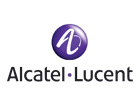What Alcatel-Lucent Carries Us
 The deal ended December 1 brought, on the one hand, a new transnational telecommunications giant, and on the other a company with two offices in each country of presence, with more than 8,000 extra people on staff who need to be put somewhere. Most likely, these people will be banal fired and sent to look for a new job and this is probably the only negative point in this merger.
The deal ended December 1 brought, on the one hand, a new transnational telecommunications giant, and on the other a company with two offices in each country of presence, with more than 8,000 extra people on staff who need to be put somewhere. Most likely, these people will be banal fired and sent to look for a new job and this is probably the only negative point in this merger.For the rest, we can talk about a huge number of positive moments, ranging from expanding the market, obtaining a huge scientific base, ready-made customer base, etc. As a result of the merger, the emerging company is present in more than 100 countries, producing equipment for the operation of wired and wireless communications, converged broadband networks, IP technologies, applications and services. The annual turnover of the new company, calculated according to the “pro-form” rules, is 18.6 billion euros, and the investment in research and development will amount to 2.7 billion euros. In a word, a company will appear on the market, able to withstand Cisco in the corporate communications market, and in the equipment market for mobile operators with Ericsson and Huawei.
After this merger, only 8 major network equipment companies remained in the market - this is the newly formed Alcatel-Lucent, Cisco, Nortel, Huawei, Siemens, Nokia, Ericsson and Motorola. It seems that in order to stay afloat the company must diversify its business as much as possible or unite with competitors.
')
Source: https://habr.com/ru/post/4805/
All Articles